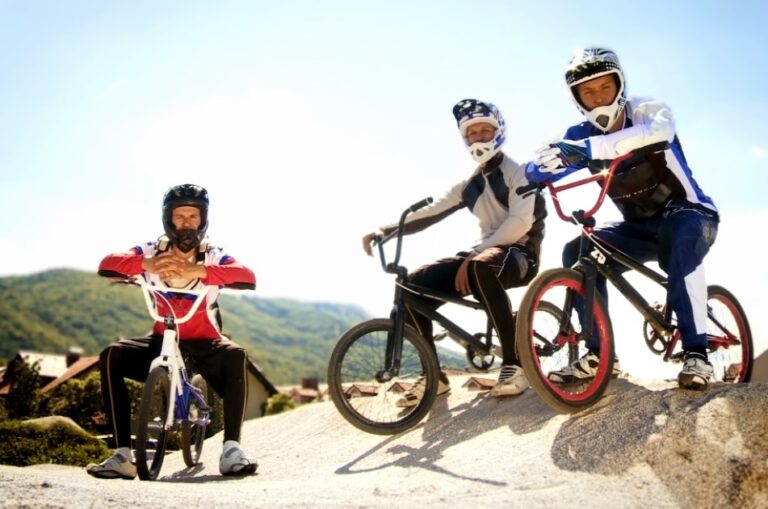The debate between BMX and dirt jumpers is one that has been around for years. There are pros and cons to both styles of riding, and ultimately it comes down to personal preference.
However, if you’re more interested in doing tricks and riding off-road, then a dirt jumper is probably the bike for you.
BMX vs Dirt Jumper
When it comes to choosing a BMX vs dirt jumper, it really depends on what you want to use it for. If you’re looking to get into racing, then a BMX is going to be your best bet.
Here we will take a look at some of the key differences between BMX and dirt jumpers to help you decide which is right for you.
When it comes to BMX, the main focus is on tricks and street riding. BMX bikes are typically smaller and lighter than dirt jumpers, making them easier to maneuver.
They also have shorter wheelbases, which makes them more responsive when doing tricks. If you’re looking to ride at skate parks or in the streets, then BMX is the way to go.
Dirt jumpers, on the other hand, are designed for big air and jumps. They have longer wheelbases and are typically heavier than BMX bikes, making them more stable in the air.
Dirt jumpers also have stronger suspension systems to absorb the impact of landings. If you’re looking to get big air and hit some huge jumps, then a dirt jumper is the bike for you.
It really depends on what you’re looking to do with your bike. If you want to focus on tricks and street riding, then BMX is the way to go.
However, if you’re looking to get big air and hit some huge jumps, then a dirt jumper is the bike for you. Ultimately, it comes down to personal preference. Try out both styles of riding and see which one you like best.
BMX Bikes
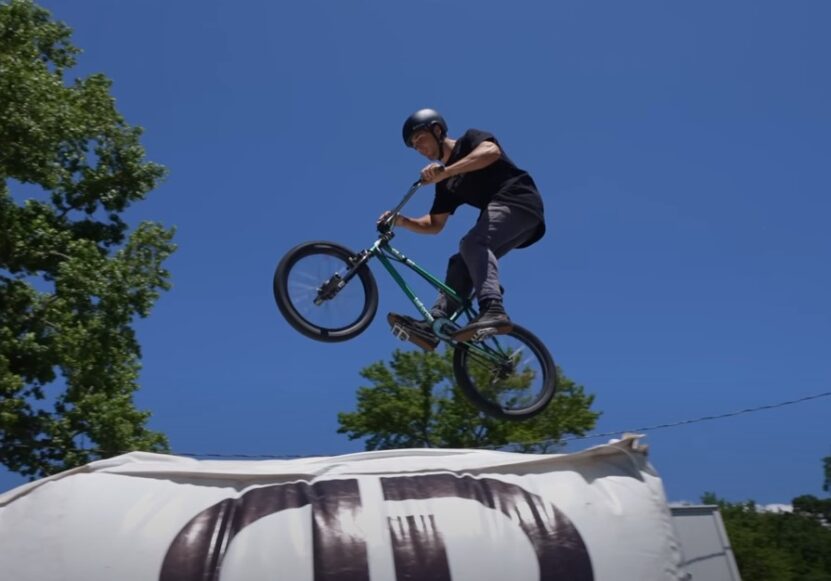
A BMX bike is a bicycle designed for racing and stunt riding. BMX stands for “bicycle motocross,” and these bikes are perfect for riders who want a versatile bike that can be used for both racing and freestyle riding.
BMX bicycles are perfect for riders who want a versatile bike that can be used for both racing and freestyle riding.
BMX bikes typically have 20-inch wheels and a strong, lightweight frame. This makes them easy to maneuver and ideal for doing tricks. If you’re looking for a bike that can do it all, a BMX bike is a great choice.
BMX bikes come in a variety of styles, so you can choose the one that best suits your riding needs. Racing BMX bikes are designed for speed and agility, with features like single-speed gearing and quick-handling frames.
Freestyle BMX bikes are built for riders who want to do tricks and stunts, with features like robust frames and rear pegs for doing grinds and other tricks.
BMX bikes typically have 20-inch wheels and a strong, lightweight frame. This makes them easy to maneuver and ideal for doing tricks.
If you’re looking for a bike that can do it all, a BMX bike is a great choice. BMX bikes come in a variety of styles, so you can choose the one that best suits your riding needs.
Dirt Jumper Overview
If you’re looking for a bike that can handle all kinds of terrain, a dirt jumper is a way to go. These bikes are designed for riders who like to go big, with suspension that can take on anything from small bumps to large drops.
And with their wide tires and durable construction, they’re built to withstand the rigors of off-road riding.
Dirt jumpers are also typically lighter than other mountain bikes, which makes them easier to maneuver in the air. If you’re ready to take your riding to the next level, a dirt jumper is a perfect bike for you.
If you’re looking for a bike that can handle all kinds of terrain, a dirt jumper is a way to go. These bikes are designed for riders who like to go big, with suspension that can take on anything from small bumps to large drops.
And with their wide tires and durable construction, they’re built to withstand the rigors of off-road riding.
Dirt jumpers are also typically lighter than other mountain bikes, which makes them easier to maneuver in the air. If you’re ready to take your riding to the next level, a dirt jumper is a perfect bike for you.
BMX Vs Dirt Jumper Handlebars And Steering
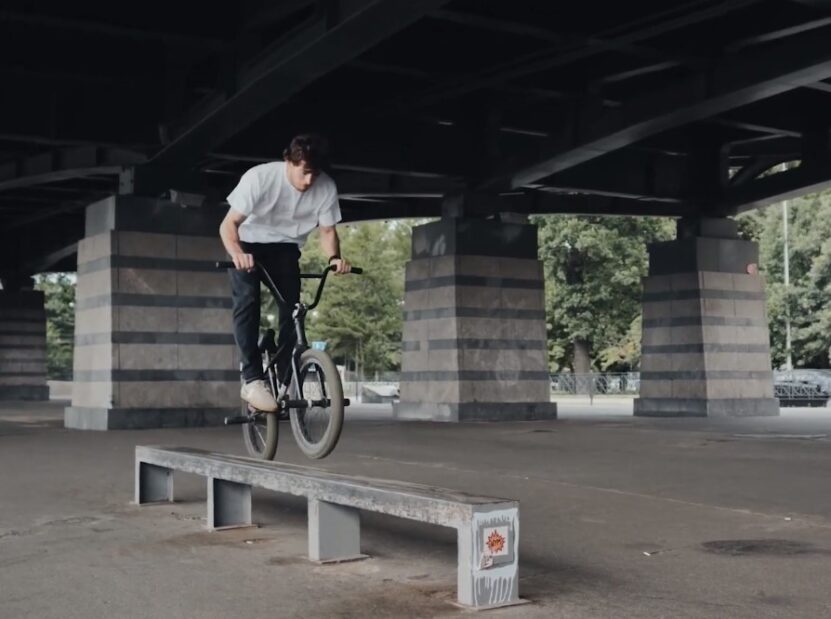
One of the biggest debates in BMX and dirt jumping is whether to use BMX or dirt jumper handlebars. Each type of handlebar has its own advantages and disadvantages, so it’s important to understand the differences before making a decision.
BMX bars are typically made from Chromoly steel or aluminum, while dirt jumper bars are often made from Chromoly steel or titanium.
BMX bars are typically wider than dirt jumper bars, which can give you more control when riding. BMX bars also tend to be taller than dirt jumper bars, which can make it easier to perform tricks.
Dirt jumper bars are typically narrower than BMX bars, which can make them easier to maneuver in the air. Dirt jumper bars are also often shorter than BMX bars, which can make them easier to control when landing tricks.
It really depends on your riding style and what you’re looking for in a handlebar. If you’re just starting out, it might be a good idea to try both types of bars and see which one feels better for you.
BMX Vs Dirt Jumper Riding Terrain
It’s important to understand the difference between BMX and dirt jumper riding terrain. While both styles of riding are similar, they each require different approaches.
BMX tracks are typically shorter and have more obstacles than dirt jumper trails. This means that riders need to be able to accelerate quickly and maintain their speed through the turns.
BMX riders also need to be able to bunny hop over obstacles and perform other tricks.
Dirt jumper trails are typically longer and have fewer obstacles than BMX tracks. This means that riders need to be able to generate speed quickly and maintain it for the duration of the trail.
Dirt jumpers also need to be able to boost over jumps and perform other tricks.
If you want to ride fast and perform tricks, then a BMX track is probably your best bet. If you’re looking for a longer, more challenging ride, then a dirt jumper trail is probably what you’re looking for.
BMX Vs Dirt Jumper Riding Style
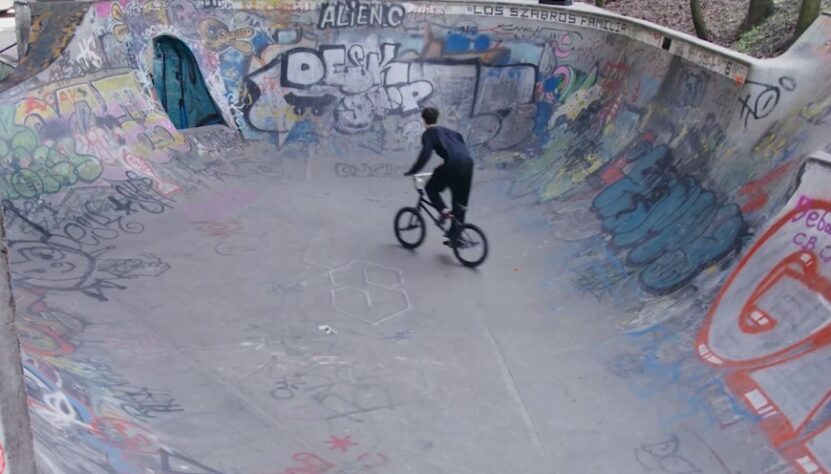
As a BMX rider, you’re always looking for the next big trick to learn. But what if you’re not sure which riding style is right for you? Do you want to go big with BMX, or get dirty with dirt jumping?
Here’s a quick rundown of the differences between BMX and dirt jumping:
BMX is all about tricks. If you’re looking to learn the latest and greatest flips and spins, BMX is the way to go. Dirt jumping, on the other hand, is all about getting big air and going fast.
BMX bikes are typically smaller and lighter than dirt jumpers, making them easier to maneuver in the air. Dirt jumpers are designed for stability and durability, so they can take a beating when you land hard.
BMX tracks are usually smooth and flat, while dirt jump tracks are full of bumps and jumps. This means that BMX riders need to be able to maintain their speed and control, while dirt jumpers need to be able to get airborne quickly.
If you’re looking to go big and learn tricks, BMX is the way to go. But if you’re more interested in getting dirty and going fast, dirt jumping is the riding style for you.
BMX Vs Dirt Jumper Top Tube Length
The top tube length on a BMX bike is typically shorter than that of a dirt jumper.
This is because BMX bikes are designed for racing and need to be more maneuverable, while dirt jumpers are designed for trick riding and need more stability. The average top tube length for a BMX bike is 20 inches, while the average for a dirt jumper is 21 inches.
However, there is some overlap between the two categories, with some BMX bikes having top tube lengths of 21 inches and some dirt jumpers having top tube lengths of 20 inches.
When choosing a BMX or dirt jumper, it is important to consider what you will be using the bike for. If you plan on doing mostly racing, then a BMX bike with a shorter top tube length is probably the best option.
If you plan on doing mostly trick riding, then a dirt jumper with a longer top tube length is probably the better choice.
However, if you are unsure of what you will be using the bike for or if you plan on doing a mix of both racing and trick riding, then a bike with a top tube length somewhere in the middle is probably the best option.
BMX Vs Dirt Jumper Design
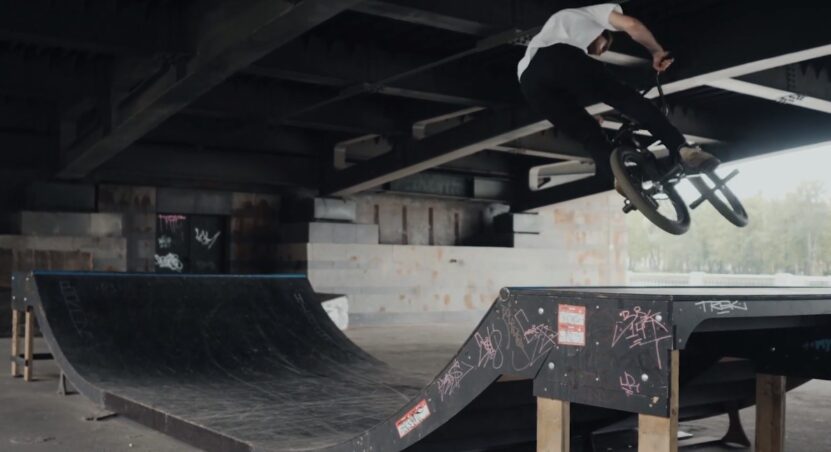
When it comes to BMX bikes, there are two main types: BMX race bikes and freestyle BMX bikes.
The latter is what most people think of when they picture a BMX bike, as it is designed for tricks and stunt riding.
Dirt jumpers are a specific type of freestyle BMX bike that is designed specifically for jumping and pumping on dirt tracks.
The main difference is in the geometry of the frame. BMX race bikes have a shorter wheelbase and a steeper headtube angle, which makes them more agile and easier to control when riding at high speeds.
Freestyle BMX bikes have a longer wheelbase and a slacker headtube angle, which makes them more stable when landing jumps and performing tricks.
Dirt jumpers fall somewhere in between, with a geometry that is designed to provide the best of both worlds.
Another difference between BMX and dirt jumper designs is in the components that are used. BMX race bikes are designed to be as light and fast as possible, so they often use lighter-weight components.
Freestyle BMX bikes are designed to be stronger and more durable, so they often use heavier-duty components.
Dirt jumpers lie somewhere in the middle, using a mix of lightweight and durable components that can stand up to the rigors of jumping and pumping.
For a bike that you can take to the track or the streets and ride hard, then a BMX race bike is probably your best bet.
For a bike that you can use for tricks and stunts, then a freestyle BMX bike is probably your best bet.
For a bike that you can use for jumping and pumping on dirt tracks, then a dirt jumper is probably your best bet.
Whichever type of bike you choose, make sure that it’s the right size for you and that it’s equipped with the right components for your riding style.
BMX Vs Dirt Jumper Suspension
As a rider, you want to feel confident when hitting big jumps and drops. Part of that confidence comes from having the right suspension set up for your weight, riding style, and terrain.
But with so many different types of mountain bikes on the market, it can be tough to know which suspension is right for you.
When it comes to suspension, BMX bikes and dirt jumpers have a lot in common. Both types of bikes typically have front and rear suspension, with forks that have around 100-120mm of travel.
And while BMX bikes are designed for racing and Dirt Jumpers are meant for, well, jumping, both types of bikes can be ridden on a variety of terrain
It all comes down to how the suspension is tuned. BMX bikes are typically equipped with stiffer suspension, which is great for staying in control at high speeds and pumping through jumps.
Dirt jumpers, on the other hand, have softer suspensions that are designed to absorb big impacts.
That means that a dirt jumper will be more forgiving if you don’t land perfectly on a jump, but it also means that the bike won’t handle as well at high speeds.
BMX Vs Dirt Jumper Brakes
When it comes to choosing the right brakes for your BMX or dirt jumper bike, there are a few things you need to take into account. Here’s a quick guide to help you make the best decision for your needs.
BMX brakes are designed for street and park riding, where you’ll be doing a lot of stopping and starting.
They’re typically lighter weight than dirt jumper brakes, and they have more adjustability so you can dial in the perfect amount of stopping power.
Dirt jumper brakes are designed for, you guessed it, dirt jumping! They’re typically a bit heavier duty than BMX brakes, and they don’t have as much adjustability.
But they’re still more than capable of getting the job done on the trails or in the park.
If you’re primarily going to be riding street or park, then BMX brakes are the way to go. If you’re planning on doing a lot of dirt jumping, then dirt jumper brakes are the better choice.
And if you’re not sure, then maybe it’s time to try both and see which you prefer!
Why BMX Bikes Are Small
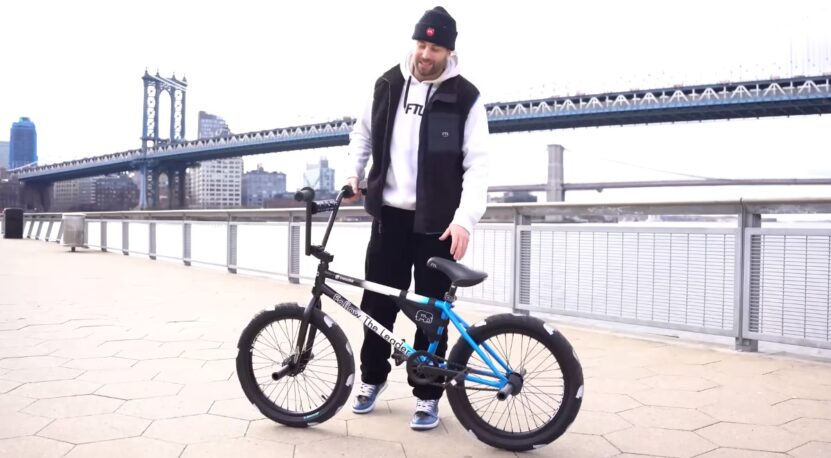
The average BMX bike is about 20 inches in length. This is much smaller than the average adult bicycle, which is around 26-28 inches in length. There are a few reasons for this.
First, BMX bikes are designed for riders who are usually between 4 and 6 feet tall. This means that the bikes need to be small enough to fit these riders comfortably.
Second, BMX bikes are designed for racing and tricks. This means that they need to be lightweight and easy to maneuver. A smaller bike is easier to control than a larger one.
Third, BMX bikes have smaller wheels than adult bicycles. This makes them faster and more agile.
Fourth, BMX bikes have a shorter wheelbase than adult bicycles. This makes them more stable and less likely to tip over.
Finally, BMX bikes have stronger frames than adult bicycles. This makes them more durable and able to withstand the rigors of racing and tricks.
BMX bikes are small for all of these reasons. They are designed to be fast, lightweight, and easy to control. If you are looking for a bike that is durable and can handle a lot of abuse, then a BMX bike is a good choice.
Does Tire Size Make A Difference On A BMX-Bike?
The short answer is yes! Tire size can affect your bike’s speed, handling, and even the feel of the ride.
Let’s take a closer look at how tire size affects each of these important factors:
Speed: Larger tires are going to be more resistant to rolling, which means they will make your bike slower. If you’re looking to go fast, you’ll want to stick with smaller tires.
Handling: The larger the tire, the more stability you’ll have when cornering. That’s because there’s more contact patch between the tire and the ground. So if you’re looking to get those tight turns, you’ll want to go with a smaller tire.
Feel: This is a tough one to quantify, but overall, smaller tires will give you a harsher ride while larger tires will be more plush. It really comes down to personal preference and the type of riding you’re doing.
Choosing When To Use A 20″ Or 24″ Wheel
When it comes to BMX bikes, tire size does make a difference. A 20″ wheel is typically smaller and lighter, making it easier to maneuver. A 24″ wheel will provide more stability and speed, but can be more difficult to control.
So, which size should you choose? It really depends on your riding style and what you’re looking for in a bike. If you’re just starting out, or if you’re looking for a bike that’s easier to control, go with a 20″ wheel.
If you’re an experienced rider who wants more speed and stability, go with a 24″ wheel.
No matter what size you choose, make sure to get a bike that’s comfortable for you and that you enjoy riding. After all, that’s what BMX is all about!
Can You Do Dirt Jumps On A BMX?
Dirt jumps are a staple of BMX riding, but can you do them on a BMX bike? The answer is yes! However, there are a few things to keep in mind.
First, your bike needs to be able to handle the jumps. A lot of BMX bikes are designed for racing and don’t have the suspension needed for big jumps. If you’re not sure if your bike can handle it, talk to a local BMX shop or the people at your local park.
Second, you need to be able to ride confidently and control your bike in the air. This takes practice, so don’t be discouraged if you don’t get it right away.
Finally, be sure to land in the center of the jump and not on the lips. This will help you avoid injury and keep your bike from getting damaged.
With these tips in mind, go out and enjoy the dirt jumps! Just be sure to ride safe and have fun.
When To Ride A Dirt Jumper Vs. BMX?
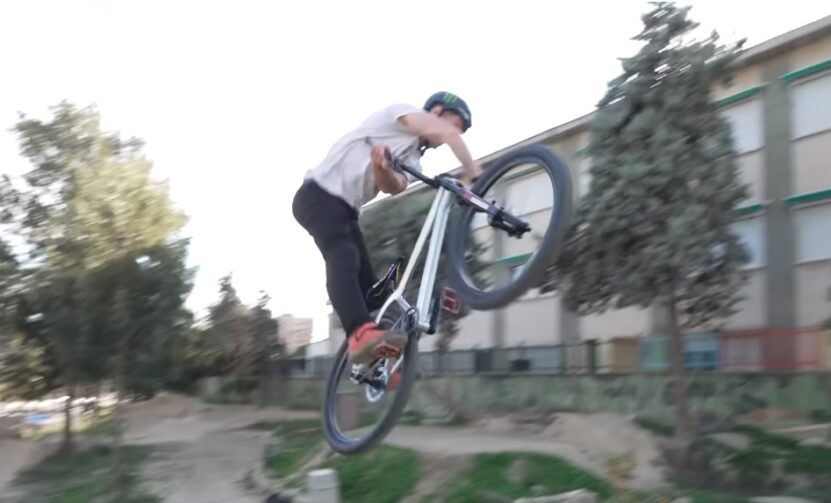
There are a few key things to consider when deciding whether to ride a dirt jumper or BMX bike. Both have their own unique benefits that can make either one the better choice depending on your riding style and goals.
Dirt jumpers are typically designed for more aggressive riding with bigger airtime and bigger jumps in mind. They usually have shorter wheelbases and lower bottom brackets which make them more maneuverable in the air.
They also tend to have stronger frames that can take a beating from all the extra landings.
BMX bikes, on the other hand, are designed for tricks and technical riding. They have longer wheelbases and higher bottom brackets which give them more stability. They also have smaller frames that make them easier to whip around for tricks.
It really depends on what you want to get out of your riding. If you’re just looking to cruise around and maybe hit a few small jumps, then a BMX bike will probably be more your speed.
Can You Race BMX On A Dirt Jumper?
The quick answer is no, you cannot race BMX on a dirt jumper. Dirt jumpers are not built for racing and lack the necessary features that make them competitive.
However, if you’re just looking to have some fun and ride your bike around a track, then a dirt jumper can be a great choice. Just keep in mind that you won’t be able to race against the clock or other riders.
If you’re interested in BMX racing, then you’ll need to invest in a proper racing bike. These bikes are designed for speed and have features that make them more aerodynamic and easier to handle at high speeds.
If you’re just starting out, then it’s worth renting a racing bike or borrowing one from a friend to see if it’s someting you’re interested in.
Racing BMX can be a lot of fun, but it’s important to remember that it’s a serious sport. If you’re not prepared to put in the time and effort required to be successful, then you’ll likely find yourself frustrated and disappointed.
However, if you’re willing to put in the work, then BMX racing can be a great way to challenge yourself and push your limits.
Who knows, you might even find yourself hooked on the thrill of racing!
Is It Worth It To Get A Dirt Jumper?
There are a lot of factors to consider when deciding whether or not to get a dirt jumper. The most important factor is probably how often you ride and what kind of riding you do.
If you only ride a few times a year, then it might not be worth it to get a dirt jumper. However, if you ride often and do a lot of jumps and tricks, then a dirt jumper might be a good investment.
Other factors to consider include the cost of a dirt jumper and the features that you want. Dirt jumpers can range in price from around $200 to over $1000.
The more expensive models usually have better suspension and components, but the cheaper models can still be a lot of fun. It’s important to decide what features are most important to you before you start shopping.
If you’re still not sure if a dirt jumper is right for you, then it might be helpful to talk to someone who already has one. They can give you first-hand advice on whether or not a dirt jumper is worth the investment.
In the end, only you can decide if a dirt jumper is worth it for you. Consider all of the factors and make a decision that is right for you and your riding style.
What Is A Dirt Jumper Bike For?
A dirt jumper bike is a specialized mountain bike designed for off-road riding and jumping.
Dirt jumper bikes typically have shorter wheelbases and lower bottom brackets than other mountain bikes, making them more maneuverable and agile.
They also have stronger frames and suspension forks to withstand the forces of landing jumps. If you’re looking for a mountain bike that can take your riding to the next level, a dirt jumper bike is a way to go.
How Do You Turn A BMX Into A Dirt Jumper?
If you’re a BMX fan, you might be wondering how you can turn your bike into a dirt jumper. After all, both BMX and dirt jumping are extreme sports that require a lot of skill and coordination.
Fortunately, it’s not as difficult as you might think. With a few simple modifications, you can turn your BMX into a dirt jumper that is capable of tackling any terrain.
Here are the modifications you’ll need to make:
- Install wider handlebars. This will give you more control over your bike when you’re jumping.
- Swap out your tires for ones that are designed for off-road riding. This will give you more traction and stability when you’re landing jumps.
- Change your gearing. You’ll need lower gears for dirt jumping, so it’s a good idea to install a smaller chainring on your bike.
- Add a suspension fork. This will help absorb the impact of landings and make your ride smoother overall.
- Get a set of platform pedals. These will give you more grip and control when you’re riding over rough terrain.
With these modifications, you’ll be able to take your BMX riding to the next level. You’ll be able to tackle any jump, no matter how challenging it might be. So get out there and start shredding the trails!
Are BMX Bikes Made For Dirt?
BMX bikes are designed for off-road riding, and they are built to withstand the rigors of dirt jumps and other rough terrains.
However, that doesn’t mean that you can’t ride your BMX bike on the pavement. In fact, many BMX riders enjoy taking their bikes out for a spin on the asphalt from time to time.
Just remember that BMX bikes are not made for speed, so don’t expect to set any land speed records on your BMX bike. Stick to the dirt where you can really let loose and enjoy the ride.
Conclusion
In conclusion, BMX bikes and dirt jumpers are both great choices for riders looking to get into off-road riding.
However, they each have their own unique benefits and drawbacks. BMX bikes are typically lighter and more agile, making them ideal for tricks and stunts. Dirt jumpers, on the other hand, are designed for bigger jumps and rougher terrain.

